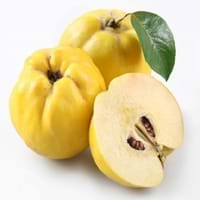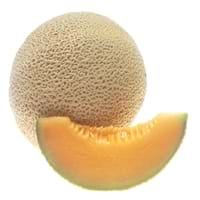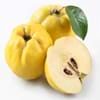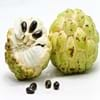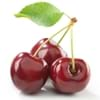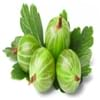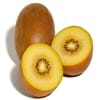Health Benefits
Cancer prevention, Cures gastro-intestinal troubles, Reduces nervous tension, Ulcer prevention
Cancer prevention, Heart care, Improves eye vision, Prevents diabetes, Reduces stress
General Benefits
Anti oxidant properties, Anti-inflammatory properties, Boosts immune system, Controls blood pressure, Digestive aid, Eye care, Helps in weight loss, Improves blood circulation, Maintains healthy cholesterol level
Boosts immune system, Cures cough, Cures fever, Digestive aid, Eye care, Helps in weight loss
Skin Benefits
Anti-aging benefits, Reduces wrinkles
Anti-aging benefits, Hydrates skin, Skin rejuvenation, Treatment of skin diseases
Hair Benefits
Regulates hair growth
Good conditioner, Prevents hair loss, Protects hair
Allergy Symptoms
NA
Abdominal pains, Anaphylaxis, Breathing difficulty, Diarrhea, Dizziness, Hives, Itching of mouth, Nasal congestion, Nausea, Vomiting
Side Effects
Allergic reaction
Allergic reaction, Bloating, Indigestion
Best Time to Eat
As a snack in the late afternoon, Don't consume at night and before bed, Eat the fresh ones, avoid mixing with any other foods, don't eat after meal., Morning time (before lunch)
As a snack in the late afternoon, Don't consume at night and before bed, Eat the fresh ones, avoid mixing with any other foods, don't eat after meal., Morning time (before lunch)
Vitamin B5 (Pantothenic Acid)
Vitamin C (Ascorbic Acid)
Vitamin E (Tocopherole)
Not Available
Vitamin K (Phyllochinone)
Not Available
Lutein+Zeaxanthin
Not Available
Phytosterol
Not Available
Calories in Fresh Fruit with Peel
Not Available
Calories in Fresh Fruit without Peel
Not Available
Calories in Frozen Form
Not Available
Calories in Canned Form
Not Available
Not Available
Varieties
Meech’s Prolific, Lusitanica, Champion and Vranja AGM
Hales Best Jumbo, Sweet 'N Early Hybrid, Hearts of Gold, Ambrosia, Athena, Honey Bun Hybrid, Fastbreak and Superstar
Color
Green, Yellow
Orange
Inside Color
White
Creamy Orange
Taste
Tart
Juicy, Musky, Sweet
Origin
Iran, South-West Asia, Turkey
Africa, India
Soil Type
Loam, Well-drained
Sandy
Climatic Conditions
Warm
Dry, Hot
Facts about
- Due to its strong & fruity aroma, brides consumed quince to ensure "perfumed lips".
- It is also called as ‘Pear of Cydonia’, being native to Caucasus and Iran.
- They call it as the ‘golden apple’ of Greek Mythology.
- Cantaloupe is known as rock-melon in some parts of the world.
- Christopher columbus first introduced cantaloupes to north america in 1494.
- The name 'Cantaloupe' as it is cultivated in papal gardens of cantaloupes, Italy.
Top Producer
Turkey
China
Other Countries
Algeria, Argentina, Azerbaijan, China, Iran, Morocco, Serbia, Spain, Uzbekistan
Iran, Romania, Turkey, United States of America
Top Importer
United States of America
United States of America
Top Exporter
Argentina
Spain
Botanical Name
Cydonia oblonga
Cucumis melo var. cantalupensis
Synonym
C. vulgaris
Cucumis melo var. reticulatus
Subkingdom
Tracheobionta
Tracheobionta
Division
Magnoliophyta
Magnoliophyta
Class
Magnoliopsida
Magnoliopsida
Subclass
Rosidae
Dillenhidae
Order
Rosales
Cucurbitales
Family
Rosaceae
Cucurbitaceae
Species
C. oblonga
C. melo
Difference Between Quince and Cantaloupe
We might think that Quince and Cantaloupe are similar with respect to nutritional value and health benefits. But the nutrient content of both fruits is different. Quince and Cantaloupe Facts such as their taste, shape, color, and size are also distinct. The difference between Quince and Cantaloupe is explained here.
The amount of calories in 100 gm of fresh Quince and Cantaloupe with peel is 57.00 kcal and Not Available and the amount of calories without peel is Not Available and 34.00 kcal respectively. Thus, Quince and Cantaloupe belong to and category.These fruits might or might not differ with respect to their scientific classification. The order of Quince and Cantaloupe is Rosales and Cucurbitales respectively. Quince belongs to Rosaceae family and Cantaloupe belongs to Cucurbitaceae family. Quince belongs to Cydonia genus of C. oblonga species and Cantaloupe belongs to Cucumis genus of C. melo species. Beings plants, both fruits belong to Plantae Kingdom.
